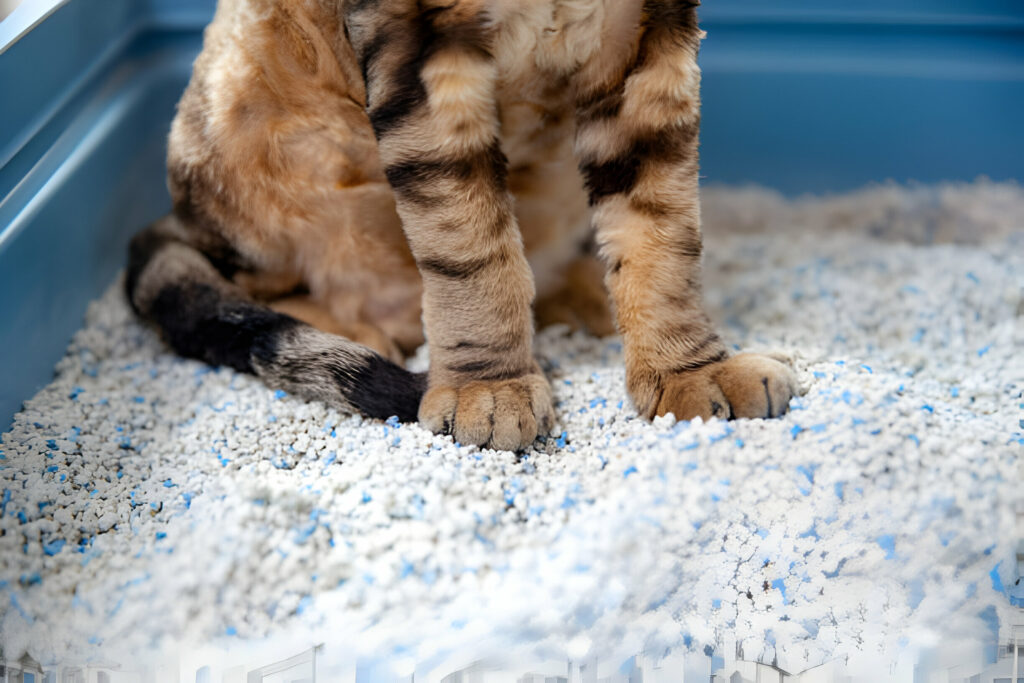Cats, known for their independent and sometimes aloof nature, are also creatures of habit. Training them to use a litter box can seem like a daunting task, especially for first-time cat owners. However, with the right approach, patience, and understanding of your feline friend’s preferences, this task can be accomplished successfully.
This article provides a detailed, step-by-step guide on how to train your cat to use a litter box, ensuring a clean and comfortable environment for both you and your pet.

Key Takeaways
- Choosing the Right Litter Box: The litter box should be large enough for the cat to turn around comfortably and have low sides for easy access. The preference for covered or open boxes may vary from cat to cat.
- Selecting Appropriate Cat Litter: Unscented, dust-free clumping cat litter is generally preferred by cats. Once a cat gets used to a particular type of litter, it’s best not to change it.
- Correct Placement of the Litter Box: The litter box should be placed in a quiet, low-traffic area. It should not be near the cat’s food and water dishes. If there are multiple cats, there should be multiple litter boxes.
- Introducing the Cat to the Litter Box: The cat should be placed in the litter box after meals or when it wakes up from a nap. Positive reinforcement when the cat uses the litter box can help in training.
- Keeping the Litter Box Clean: The litter box should be scooped out daily and the litter should be changed regularly. Strong-smelling cleaners should be avoided.
- Patience and Consistency: Training a cat to use a litter box requires patience and consistency. Punishing the cat for accidents can create a negative association with the litter box and make training more difficult.
Step by Step on How to train the cat to use a litter box properly
Let’s delve deeper into each step of training a cat to use a litter box.
Choose the Right Litter Box
The size and style of the litter box can greatly influence a cat’s willingness to use it. The box should be large enough for the cat to comfortably turn around in. If the cat is a kitten or has mobility issues, the sides should be low enough for easy access.
There are various types of litter boxes available in the market, including open ones and those with covers. While some cats may prefer the privacy of a covered box, others might feel trapped and prefer an open one. It might take some trial and error to find out what your cat prefers.
Select Appropriate Cat Litter
The type of litter used can also affect a cat’s litter box usage. Cats generally prefer unscented, dust-free clumping cat litter. The texture of the litter should be soft, as cats are sensitive to touch.
Once your cat has gotten used to a particular type of litter, avoid changing it as cats can be resistant to change and might refuse to use the litter box if the litter is changed.
Place the Litter Box Correctly
The location of the litter box is another crucial factor. It should be placed in a quiet, low-traffic area where your cat won’t be disturbed. Cats prefer to do their business in private, so avoid high-traffic areas.
Also, the litter box should not be placed near the cat’s food and water dishes, as cats do not like to eliminate where they eat. If you have multiple cats, you should have multiple litter boxes to prevent territorial disputes.
Introduce Your Cat to the Litter Box
Introducing your cat to the litter box is a critical step. You can place your cat in the litter box at times when it is likely to need to go, such as after meals or when it wakes up from a nap.
Never force your cat to stay in the litter box. Let it explore and get used to it on its own terms. Praise your cat when it uses the litter box to reinforce the behavior.
Keep the Litter Box Clean
Cats are clean animals and a dirty litter box can deter them from using it. Make sure to scoop out waste daily and change the litter regularly.
When cleaning the litter box, avoid using strong-smelling cleaners as the strong odors can deter your cat from using the box. A mild, unscented soap and warm water are usually sufficient.
Be Patient and Consistent
Patience and consistency are key in litter box training. Cats might not get it right away, and there might be accidents. Never punish your cat for accidents as this can create a negative association with the litter box and make training more difficult. Instead, continue to encourage and reward your cat when it uses the litter box.
Remember, every cat is unique and what works for one might not work for another. It’s all about understanding your cat’s preferences and needs, and being patient as they learn to use the litter box.
Conclusion
Training a cat to use a litter box is a process that requires time, patience, and understanding. It’s about finding the right balance between accommodating your cat’s natural instincts and maintaining a clean and odor-free home. Remember, every cat is unique, and what works for one might not work for another.
But with consistent effort, positive reinforcement, and a little bit of patience, your cat will soon be using the litter box like a pro. This not only ensures a clean home but also a happy and healthy cat.




